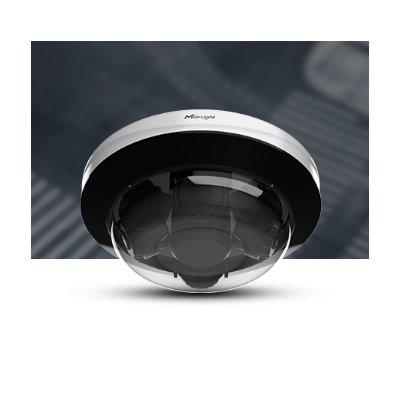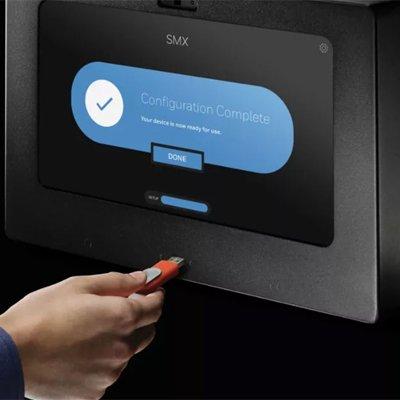Cybersecurity talk currently dominates many events in the physical security industry. And it’s about time, given that we are all playing catch-up in a scary cybersecurity environment where threats are constant and constantly evolving. I heard an interesting discussion about cybersecurity recently among consultants attending MercTech4, a conference in Miami hosted by Mercury Security and its OEM partners.
The broad-ranging discussion touched on multiple aspects of cybersecurity, including the various roles of end user IT departments, consultants, and integrators. Factors such as training, standardisation and pricing were also addressed as they relate to cybersecurity. Following are some edited excerpts from that discussion.
The role of the IT department
Pierre Bourgeix of ESI Convergent: Most enterprises usually have the information technology (IT) department at the table [for physical security discussions], and cybersecurity is a component of IT. The main concern for them is how any security product will impact the network environment. The first thing they will say, is “we have to ensure that there is network segmentation to prevent any potential viruses or threats or breaches from coming in.” The main concern for IT departments is how any security product will impact the network environment”
They want to make sure that any devices in the environment are secure. Segmentation is good, but it isn’t an end-all. There is no buffer that can be created; these air gaps don’t exist. Cyber is involved in a defensive matter, in terms of what they have to do to protect that environment. IT is more worried about the infrastructure.
The role of consultants and specifiers
Phil Santore of DVS, division of Ross & Baruzzini: As consultants and engineers, we work with some major banks. They tell us if you bring a new product to the table, it will take two to three months before they will onboard the product, because they will run it through [cybersecurity testing] in their own IT departments.
If it’s a large bank, they have an IT team, and there will never be anything we [as consultants] can tell them that they don’t already know. But we all have clients that are not large; they’re museums, or small corporations, or mom-and-pop shops. They may not be as vulnerable from the international threat, but there are still local things they have to be concerned about.
It falls on us as consultants to let them know what their problems are. Their IT departments may not be that savvy. We need to at least make them aware and start there.
Wael Lahoud of Goldmark Security Consulting: We are seeing more and more organisations having cybersecurity programs in place, at different maturity levels. At the procurement stage, we as consultants must select and specify products that have technology to enable cybersecurity, and not choose products that are outdated or incompatible with cybersecurity controls.
We also see, from an access control perspective, a need to address weaknesses in databases. Specifying and having integrators that can harden the databases, not just the network itself, can help.
 |
| The impact of physical security products on the network environment was a dominant topic at the MercTech4 consultants roundtable discussion |
The need for standards on cybersecurity
Jim Elder of Secured Design: I’d like to know what standards we as specifiers can invoke that will help us ensure that the integrator of record has the credentials, knows what standards apply, and knows how to make sure those standards are maintained in the system. I’m a generalist, and cybersecurity scares the hell out of me.
We’re not just talking about access to cameras, we are talking about access to the corporate network and all the bad things that can happen with that. My emphasis would be on standards and compliance with standards in the equipment and technology that is used, and the way it is put in. It can be easier for me, looking at some key points, to be able to determine if the system has been installed in accordance. We are seeing more and more organisations having cybersecurity programs in place, at different maturity levels"
I’m taking the position of the enforcement officer, rather than the dictator. It would be much better if there were focused standards that I could put into the specification— I know there are some – that would dictate the processes, not just of manufacturing, but of installation of the product, and the tests you should run accordingly.
Pierre Bourgeix: With the Security Industry Association (SIA), we are working right now on a standard that includes analysed scoring on the IT and physical side to identify a technology score, a compliance score, a methodology, and best-of-breed recommendation. Vendor validation would be used to ensure they follow the same process. We have created the model, and we will see what we can do to make it work.
Terry Robinette of Sextant: If a standard can be written and it’s a reasonable process, I like the idea of the equipment meeting some standardised format or be able to show that it can withstand the same type of cyber-attack a network switch can withstand. We may not be reinventing the wheel. IT is the most standardised industry you will ever see, and security is the least standardised. But they’re merging. And that will drive standardisation.
Jim Elder: I look to Underwriters Laboratory (UL) for a lot of standards. Does the product get that label? I am interested in being able to look at a box on the wall and say, “That meets the standard.” Or some kind of list with check-boxes; if all the boxes are checked I can walk out and know I have good cybersecurity threat management. IT is the most standardised industry you will ever see, and security is the least standardised"
The role of training
Phil Santore: Before you do any cybersecurity training, you would need to set the level of cybersecurity you are trying to achieve. There are multiple levels from zero to a completely closed network.
Wael Lahoud: From an integrator’s perspective, cybersecurity training by the manufacturer of product features would be the place to start – understanding how to partner the database, and the encryption features.
We see integrators that know these features are available – they tick the boxes – but they don’t understand what they mean. Cybersecurity is a complex topic, and the risk aspects and maturity levels vary by organisation. That would be a good starting point.
The role of integrators
Wael Lahoud: Integrators like convenience; less time means more money. So, we see some integrators cut corners. I think it is our role (as consultants) to make sure corners are not cut. If you rely solely on integrators, it will always be the weak password, the bypass. We have seen it from small projects to large government installations. It’s the same again and again.
Even having an internal standard within an organisation, there may be no one overseeing that and double-checking. Tools will help, but we are not there at this point. I will leave it up to manufacturers to provide the tools to make it easy for consultants to check, and easier for integrators to use the controls.
 |
| Cybersecurity is a complex topic, and the risk aspects and maturity levels vary by organisation - so training is very important |
The impact of pricing
Pierre Bourgeix: The race to the cheapest price is a big problem. We have well-intended designs and assessments that define best-of-breed and evaluate what would be necessary to do what the client needs. But once we get to the final point of that being implemented, the customer typically goes to the lowest price – the lowest bidder. That’s the biggest issue.
You get what you pay for at the end of the day. With standards, we are trying to get to the point that people realise that not all products are made the same, not all integrators do the same work. We hope that through education of the end user, they can realise that if they change the design, they have to accept the liability.It’s not just the product that’s the weakest link, it’s the whole process from design to securing that product and launching it"
The big picture
Wael Lahoud: The Windows platform has a lot of vulnerabilities, but we’re still using it, even in banks. So, it’s not just the product that’s the weakest link, it’s the whole process from design to securing that product and launching it. That’s where the cybersecurity program comes into play. There are many vulnerable products in the market, and it’s up to professionals to properly secure these products and to design systems and reduce the risk.
Pierre Bourgeix: The access port to get to data is what hackers are looking for. The weakest link is where they go. They want to penetrate through access control to get to databases. The golden ring is the data source, so they can get credentialing, so they can gain access to your active directory, which then gives them permissions to get into your “admin.” Once we get into “admin,” we get to the source of the information. It has nothing to do with gaining access to a door, it has everything to do with data. And that’s happening all the time.














































